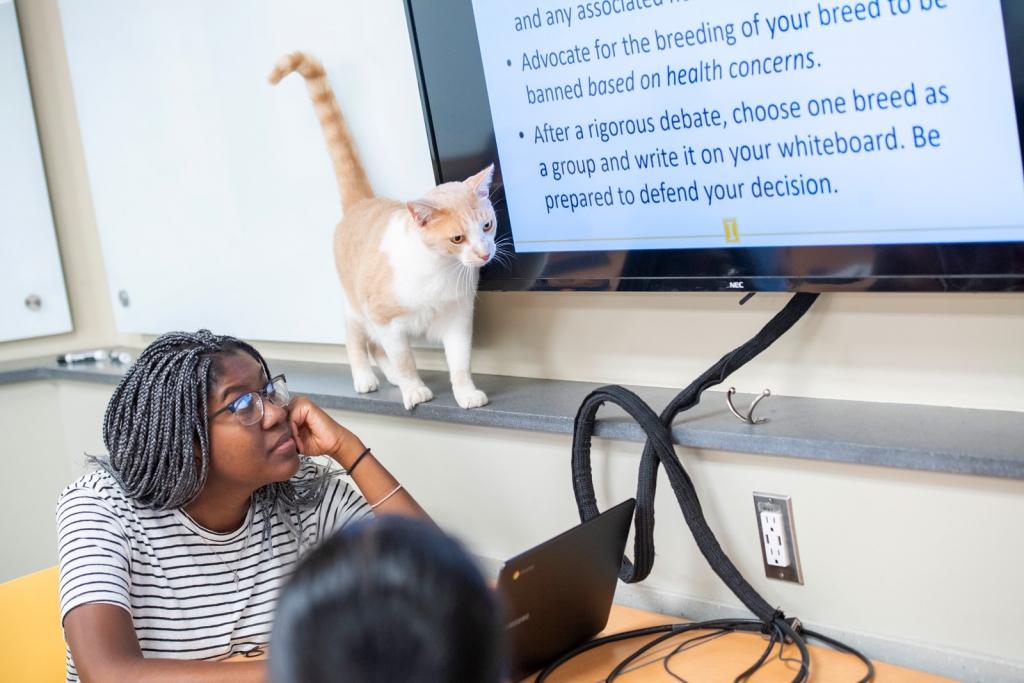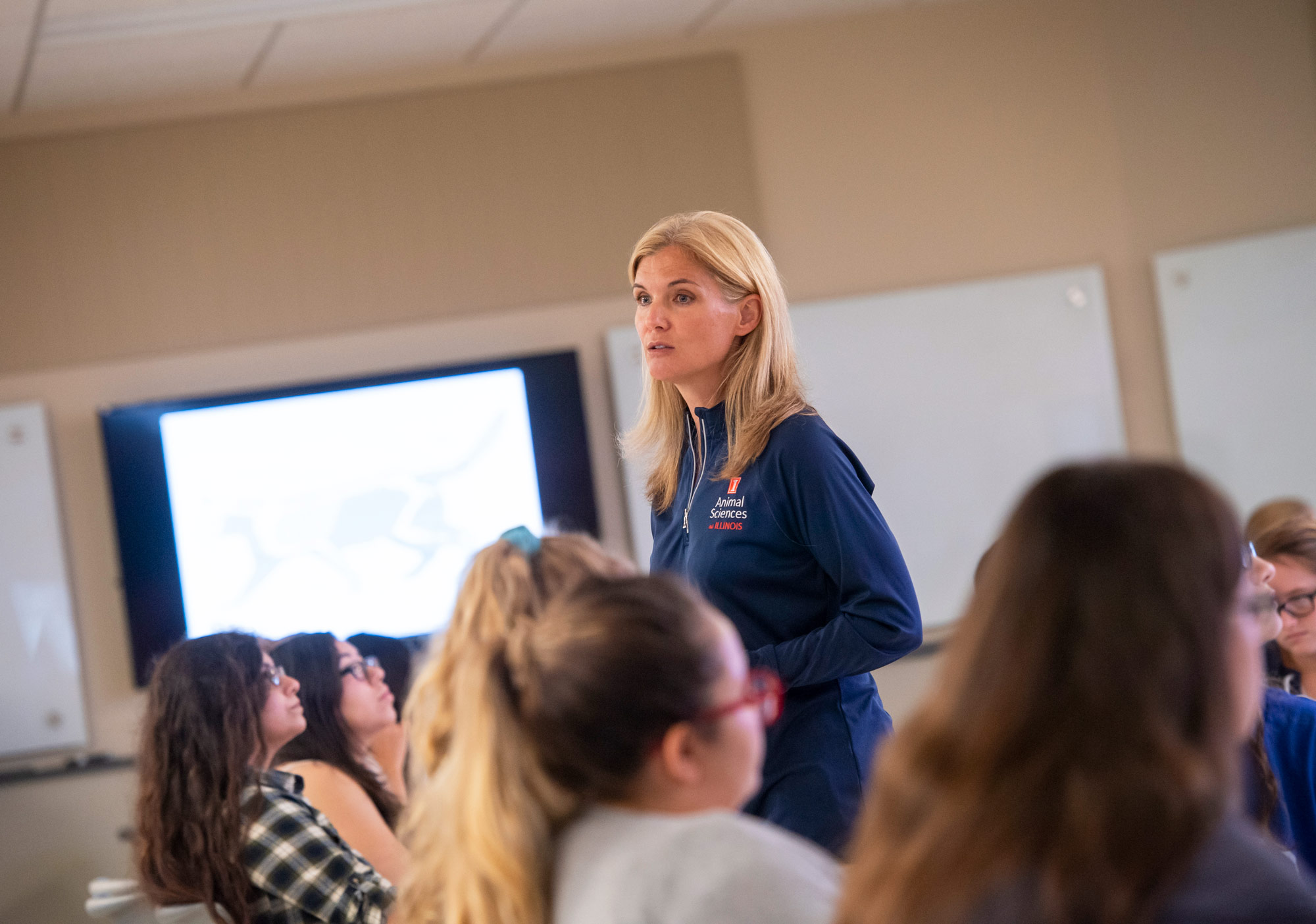As the professor delves into the morning’s lecture, Carmen wanders between the rows of students, trying to decide where to sit. After what feels like forever, she flops down beside a friendly face … and receives a long pat on the head as her reward.
The class is Companion Animal Management, and Carmen is Professor Amy Fischer-Brown’s pet basset hound. (Milo, the professor’s cat, also happens to be in attendance today, but he’s huddled in the corner of his carrier.) A 300-level course housed within the Animal Sciences department at Illinois, Companion Animal Management teaches students how to best care for animals commonly kept as pets.
“We cover the basic biology: structure, health, preventive health,” says Professor Fischer-Brown. “We come at it from a preventive management/preventive health strategy. It’s not at all a veterinary class, but just, if you’re going to have an animal at home, what do you need to know about his biology to really keep him healthy?”
Professor Fischer-Brown has taught at Illinois for nearly 15 years. Her goal is to keep classes both practical and engaging, with fewer lectures and more discussions, group work, and demos. That’s where Carmen and company come in.
“In terms of applying the course content, it’s really fun because we can grab Carmen and say, ‘Okay, here’s the structure of the paw we’re talking about,’” she says. “Because she’s a basset, we can show how her joint is pretty messed up and compare it to the ideal structure. It just helps to have that demonstration.”

Carmen watches over the class. 
Milo makes sure students are on task.
Oftentimes the class’s special guests are dogs, but depending on the day’s topic, cats—like Milo, who’s still hiding out—are welcome, too. Once, as part of a nontraditional species lecture, a very large rabbit even made an appearance.
“Chuck the giant rabbit,” Professor Fischer-Brown confirms. “I think he was 18 pounds. He’s a Flemish giant. He’s big, very handsome.”
Guests aren’t only of the animal variety. A speaker from ASPCA Animal Poison Control Center visits each year to talk about toxicology, touching on common items found in the home that can harm a pet. Other Illinois professors also drop in to discuss topics in which they specialize.
“My colleague who handles the behavior section, Laura Davis, will arrange for there to be many dogs over at the stock pavilion, and the students will work in groups to do basic training,” says Professor Fischer-Brown. “Dr. Godoy, who does the nutrition portion, does this great activity where she brings in these moving carts full of pet foods. She first helps students see how overwhelming it is to read a label. After that, they know, ‘Okay, here’s how I read a label, here’s what I look for, here’s what’s meaningful to me for this animal in this life stage.’”

In today’s class, Professor Fischer-Brown is explaining the unique structural components of cats (Milo’s tail allows him great balance), as well as how joint angle affects locomotion in dogs (as a basset, Carmen doesn’t possess proper shoulder angulation). She follows up the lecture with a group exercise, where students must advocate for the banning of certain cat breeds based on their health issues. Milo finally and quite fittingly slinks out of his carrier to explore his surroundings once the debate begins.
The hands-on experiences Professor Fischer-Brown provides during each class setting help her students more easily connect with the course’s content and better retain information throughout the semester. It’s her hope that through these efforts, they’ll not only gain an appreciation of what a healthy pet looks like, but also recognize when a pet is unhealthy and what they can do as professionals to address it.
“I really want them to come out the other end feeling empowered to say, ‘Okay, I am an animal scientist,’” she says. “Because everybody loves animals, right? My students are going to set themselves apart as having the science and expertise to be a professional.”
Professor Fischer-Brown is confident this special combination of compassion and credibility will empower her students to bring about positive changes in the field, whatever path they choose to pursue after graduation.
“They love another sentient being so much that they’re just this core beautiful person, and they really want to do good. They want to have a career that is meaningful,” she says. “They’re really just special, I think.”
It’s safe to say that Carmen, who continues to bask in the near-constant ear rubs and back scratches, agrees.